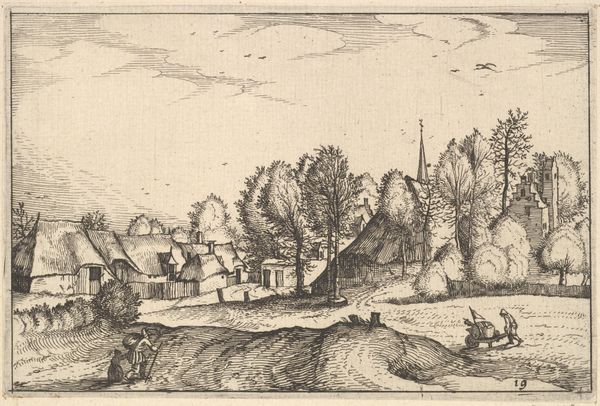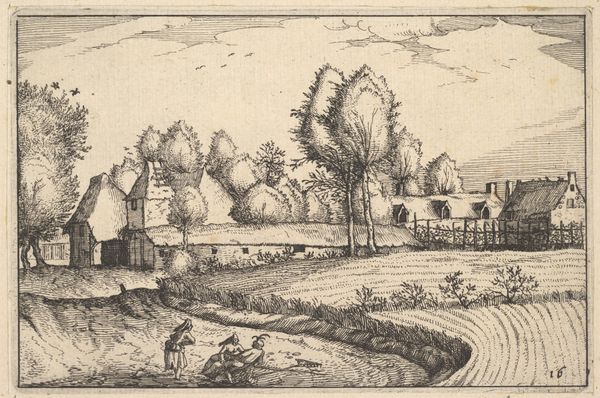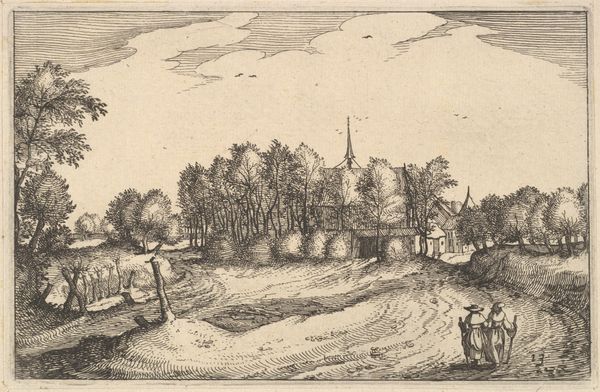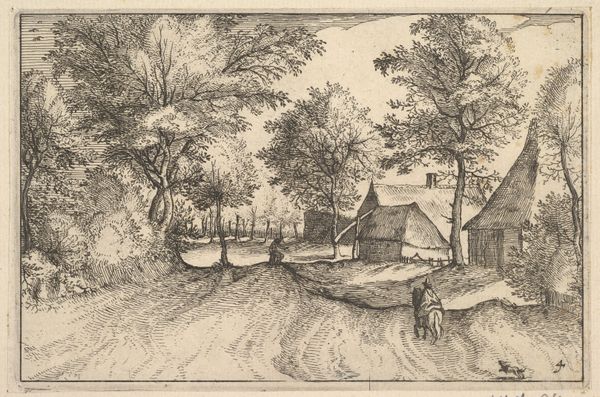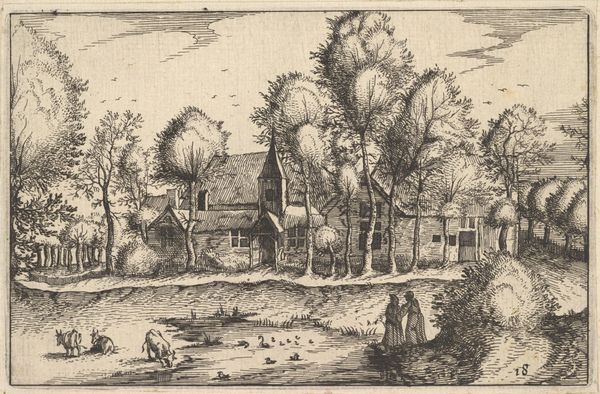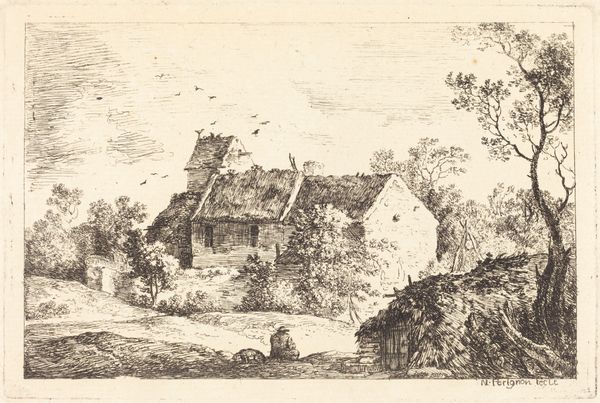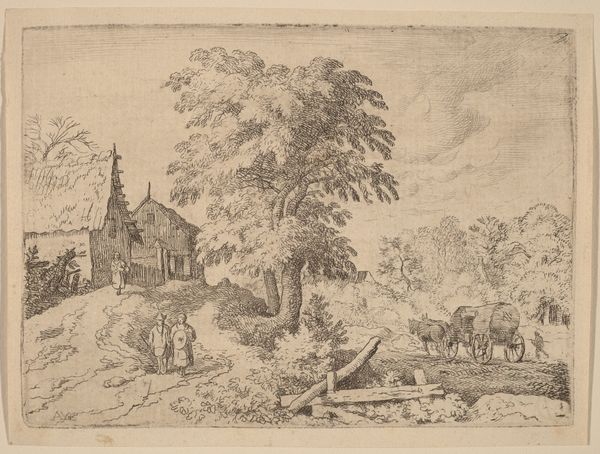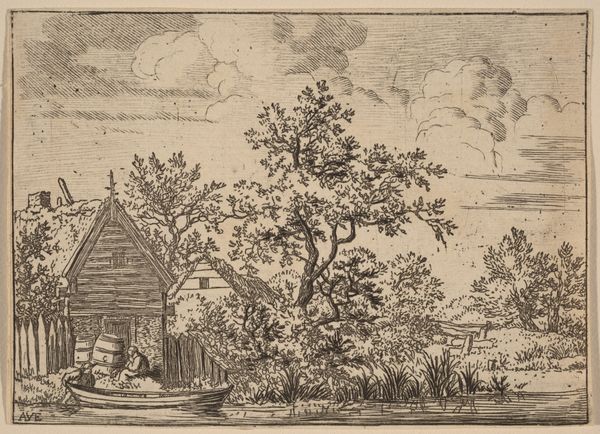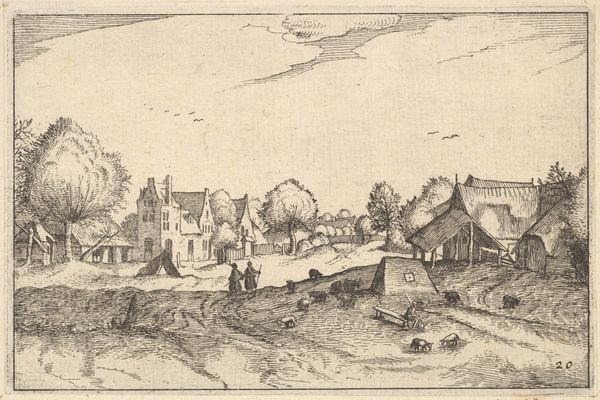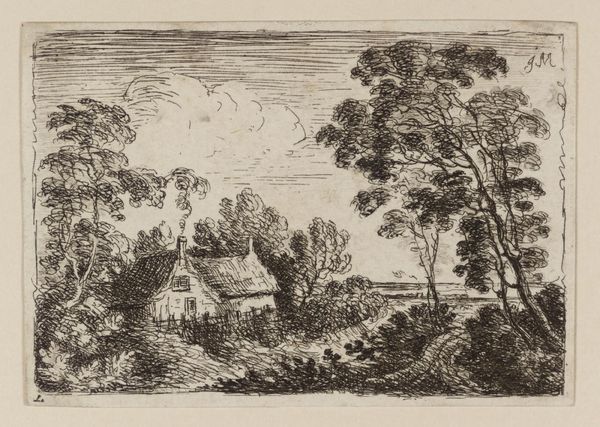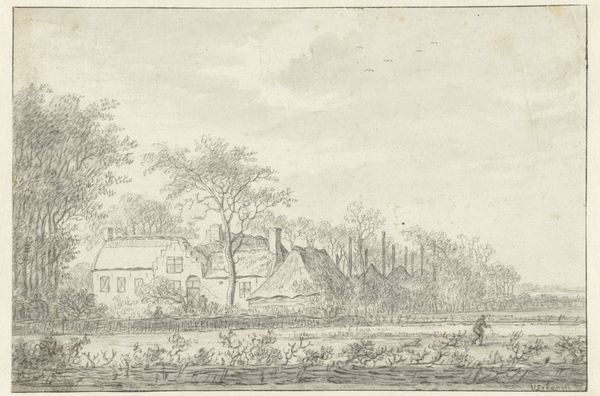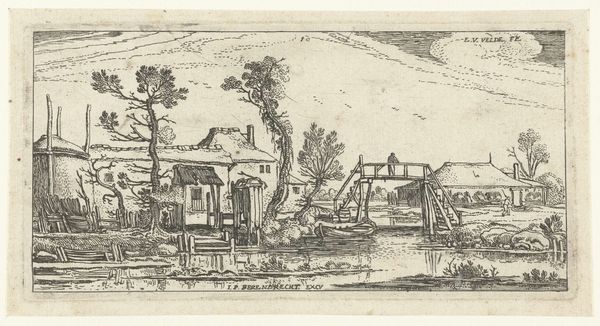
A Village Road, plate 7 from "Regiunculae et Villae Aliquot Ducatus Brabantiae" 1605 - 1615
0:00
0:00
drawing, print, etching
#
drawing
#
dutch-golden-age
# print
#
etching
#
landscape
Dimensions: Sheet: 4 1/8 × 6 3/16 in. (10.4 × 15.7 cm)
Copyright: Public Domain
Curator: Looking at "A Village Road" by Claes Jansz. Visscher, made sometime between 1605 and 1615, what immediately strikes you? It's an etching, a detailed landscape scene. Editor: A sense of stillness. The textures are beautiful—the lines create depth and a gentle quietness. But it's also stark; there's something deeply vulnerable about the way those figures by the road are rendered. Curator: Indeed. The Dutch Golden Age witnessed significant social stratification and land ownership. The figures on the road, the focus of their labor obscured, highlights a lived experience deeply impacted by early capitalism. They are tied to the land in a way the burgher class isn't. Editor: Do you see it reflecting back then as we can see it now? There's a romantic element to these landscapes that obfuscates power. While Visscher meticulously details the village setting, he omits specific narratives, leaving these women and their struggles unnamed, ahistorical. Curator: The perspective is revealing. From where we stand as the viewer, a seemingly detached observation of peasant life unfolds, potentially reflecting societal hierarchies. Etchings like this contributed to a constructed idea of a cohesive, quaint village life that, frankly, probably was a lot less peaceful than it looks. This visual language naturalizes a social structure. Editor: Absolutely. Think about who had access to prints and drawings at the time, primarily upper-class urban dwellers, right? This image could fuel the mythos of an agrarian idyll far removed from their realities, reaffirming ideas of rural simplicity and… subjugation. Curator: It prompts the critical question of whose stories are legitimized through representation. This work isn't simply a depiction; it's a piece within a system, reinforcing a cultural gaze. Editor: Analyzing that gaze becomes crucial when navigating through artistic representations, and how those inform historical biases. Curator: Precisely, reminding us to question the stories images tell and the histories they inadvertently—or deliberately—omit.
Comments
No comments
Be the first to comment and join the conversation on the ultimate creative platform.
